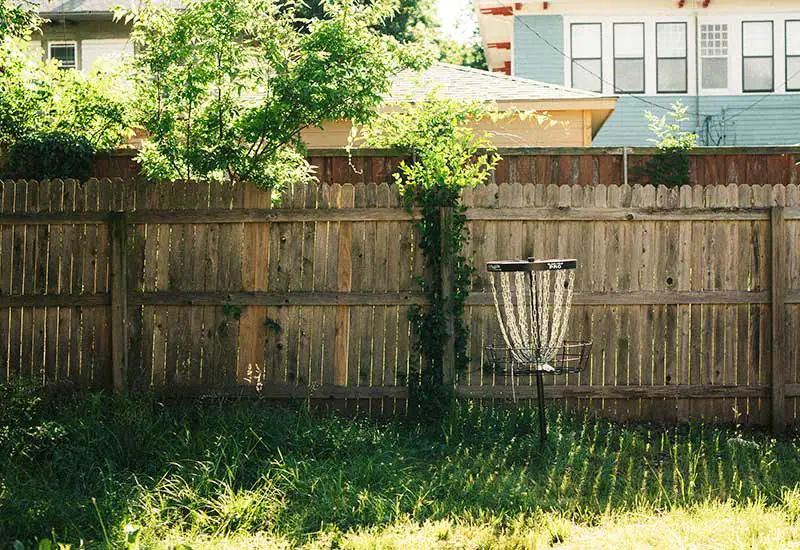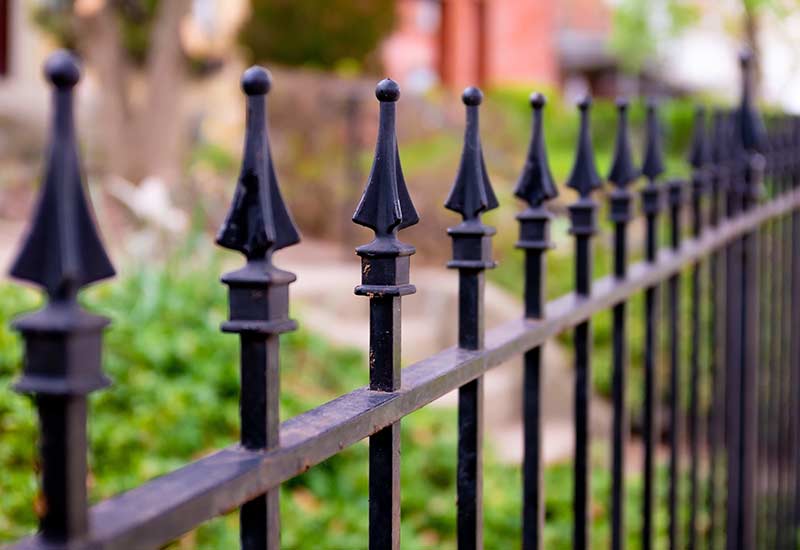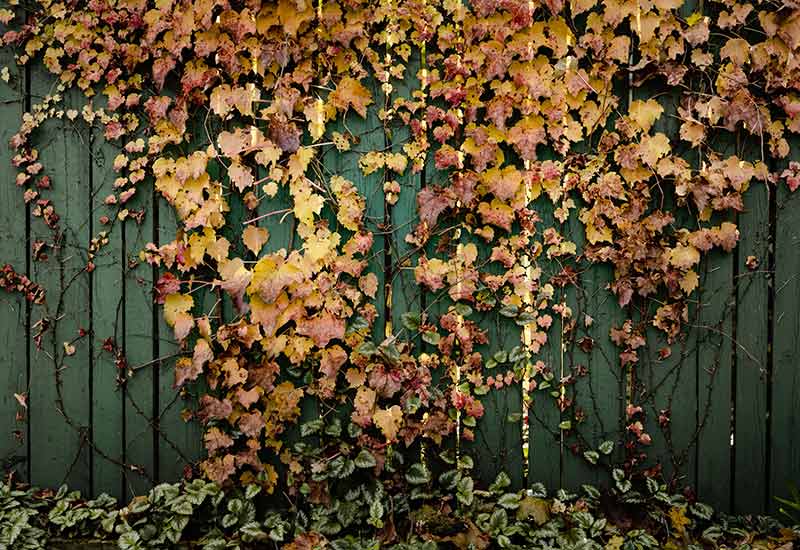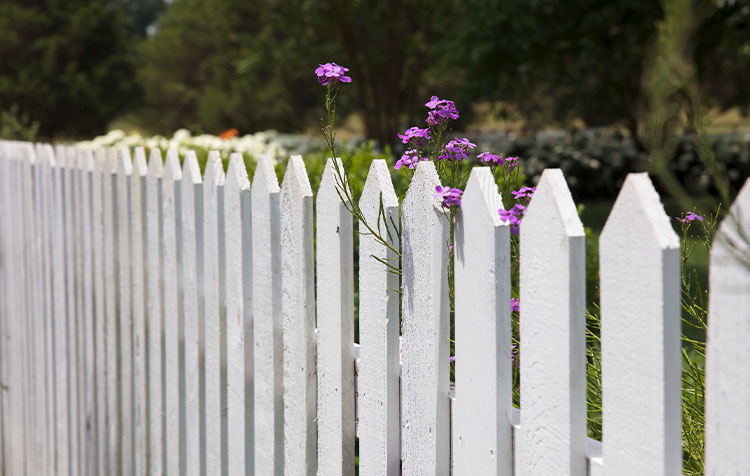Want to know more about sustainable fences? Then you've come to the right place! You're probably in the middle of planning your garden - or your garden in general could do with a new boundary. Either way, it's great that you can update your fence or maybe even your entire Build garden sustainably want. Decisive for its ecological value is, above all, the most durable and weatherproof material, but also the design and use of the fence.
In this article I would like to introduce you to suitable fences and give you valuable tips on how to implement them. Let's go!
- Wood fence
- Stone wall
- Willow fence
- Log cabin fence
- Gabions
- Metal fence
- Attach plants
- Grow birdhouse and bee hotel
- Stacking wood on the fence
- Allow to grow over
1. wooden fence

Wood is a sustainable, since renewable raw material - and that alone makes it more environmentally friendly than many other building materials. Corresponding fences are available in all colors and shapes - whether as opaque Board fence or as bound together Picket fence. If you build your garden fence yourself, you can even make recesses and recesses in it, which can be used as food or water source for various animals and insects.
With a new coat of paint and a little creativity, old Euro pallets can also be used as a fence for your garden. The wood of the pallets is usually free of toxins, and you can use them to additionally embellish with nesting aids and flower pots. This makes your garden fence extra sustainable and also helps to keep the Stop species extinction.
Important: To ensure that your wooden fence in the garden lasts as long as possible and is truly sustainable, you should paint it (regularly) with a natural glaze - e.g. made of natural resin oil.
2. stone wall
Pure, lifeless gravel gardens are the opposite of sustainable. Nevertheless, even in an environmentally conscious garden you can naturally -. durable, dimensionally stable and visually appealing - work with stones. Instead of fencing in your garden, you can also work with a stone wall in some places, for example. for privacy and a clear boundary provide. Deliberately build in cavities that provide a nesting place for insects, for example. Stone walls with crevices and slots are also a popular habitat for some small animal species.
Insider tip double-skin wall: Earth is filled between two parallel stone walls so that your garden fence becomes a biotope! The soil can be planted as needed and thus become a habitat, nesting and feeding place for numerous animal species. This form of garden fencing may seem exotic at first glance and also requires a little more preparatory work. However, the result can be seen.
3. willow fence
Another sustainable fence is the classic woven willow fence. Made from interwoven willow branches, it ultimately creates a beautiful, dimensionally stable and, most importantly, "living" fence for your garden. It always grows and blooms at the interfaces and is thus a paradise for bees and other animals from the garden world.
4. log cabin fence
A fence from untreated, thin wooden logs laid on top of each other not only looks rustic. It also decomposes itself without residue after 10 to 20 years and can provide food for fungi and many species of insects during its lifetime. The trunks may not always be perfectly straight and therefore not absolutely opaque, but plants tend to grow particularly well on it, so that a as possible natural, wild, green, overall picture can arise.
5. (Upcycling) metal fence

Their durability makes metal fences such as the Double bar fence, the aluminum fence or the cast iron fence. ultimately environmentally friendly as well. The longer you cherish, care for and keep it, the more sustainable.
However, for example, at a scrap yard, you can get steel parts and then assemble them into a garden fence. Such a Upcycling project protects the environment and is sustainable, since already consumed, natural resources can be reused. A beautiful example of truly sustainable fencing.
Chain link fence: Also with a coarse mesh Fence made of plastic-coated wire, you can naturally border your garden. The fence is stable and also serves as a climbing aid for various plants. To help and protect the animals, by the way, it is useful if the wire mesh fence begins only about 10 centimeters above the ground.
6. gabions
I personally find the wire racks filled with stones visually not so appealing - but gabions certainly have an ecological value. Between the stones stacked on top of and next to each other create habitable gapswhich provide shelter for many garden animals and especially insects. For this purpose, however, it is important to choose larger stones or to leave larger gaps between the stones.
Tip: Gabions can also be filled with wood, which often creates an even more vibrant "fence culture".
7. attach plants
Plants serve not only as privacy screens, but also as a source of food and habitat for countless garden inhabitants. Therefore, give free rein to your creativity. Weld metal rings for flower pots to your metal fence or nagle small old wine boxes filled with soil and wildflowers. To your board fence. No need for a creative miracle - ordinary, attached flower pots will do just fine if you want to protect and support insects! 🙂
Tip: How to make a create a bee friendly gardenI'll show you in a separate blog post.
8. grow bird house and bee hotel
Plants provide them with food - classic insect hotels made of wood a home. They are also wonderful to hang on the fence and are ideally suited, to provide nesting places for bees and other insects. You can even build several insect hotels on top of each other and thus cover, for example, fence gaps. Even if we are talking about limiting fences here, there are at least no limits to the imagination.
9. stack wood on the fence
Wood can be stacked particularly well against a fence. The stack of wood is then Privacy screen, animal protection, nesting opportunity, food source and species-rich small biotope in one. The absolute jackpot for countless species of insects and fungi, but also for example, toads, mice, frogs, lizards, slow worms and birds. And if it should not be a whole pile of wood, then at least something Deadwood - that love the animal inhabitants of the garden!
10. allow to grow over

Sustainable fences do not stand alone - ideally they are overgrown with climbing plants such as ivy, the morning glory or the firethorn. In this way, your fence becomes a protective habitat and, ideally, also serves as a source of food for many animals in the garden. At the same time, climbing plants make non-enclosed fences (such as metal fences with thin rods) much opaque.
Tip: With what plants you can decorate your fence or, for example, your Let garden shed overgrown you can find out in the linked article.
Make fences sustainable and protect the environment
There are many ideas for a creative as well as sustainable and environmentally friendly garden fence - also the Combination with a revitalized hedge is of course possible.
Most of the tips in this article are relatively easy to implement, protect the environment - and, in the best case, your wallet. One more important principle to conclude: the more "permeable" and diverse the fence material, the more animals and insects can feel at home in the fence or at least in the area surrounding your garden border.
Do you have any questions or further tips? Then I look forward to your comment!
Stay sustainable,

PS.: Even more gardening tips? Then check out now my detailed article about the sustainable garden house. Have fun!





